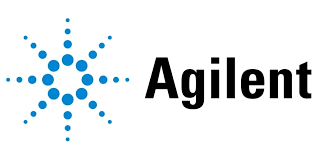Ai In Elementary Education
Published Date: 02 June 2025 | Report Code: ai-in-elementary-education
Ai In Elementary Education Market Size, Share, Industry Trends and Forecast to 2033
This comprehensive report examines the evolving landscape of AI in Elementary Education from 2024 to 2033. It provides thorough insights into market size, growth trends, industry dynamics, and segmentation strategies. Highlighting regional developments and technological innovations, the report also discusses key challenges and opportunities, ensuring that educators and policymakers can effectively leverage AI advancements globally.
| Metric | Value |
|---|---|
| Study Period | 2024 - 2033 |
| 2024 Market Size | $3.50 Billion |
| CAGR (2024-2033) | 7.2% |
| 2033 Market Size | $6.66 Billion |
| Top Companies | EduTech Innovations, SmartLearn Systems, FutureClass Technologies |
| Last Modified Date | 02 June 2025 |
Ai In Elementary Education (2024 - 2033)
Ai In Elementary Education Market Overview
Customize Ai In Elementary Education market research report
- ✔ Get in-depth analysis of Ai In Elementary Education market size, growth, and forecasts.
- ✔ Understand Ai In Elementary Education's regional dynamics and industry-specific trends.
- ✔ Identify potential applications, end-user demand, and growth segments in Ai In Elementary Education
What is the Market Size & CAGR of Ai In Elementary Education market in 2024?
Ai In Elementary Education Industry Analysis
Ai In Elementary Education Market Segmentation and Scope
Tell us your focus area and get a customized research report.
Ai In Elementary Education Market Analysis Report by Region
Europe Ai In Elementary Education:
Europe is also experiencing significant growth, with market size expected to rise from 1.12 billion in 2024 to 2.14 billion by 2033, driven by strong regulatory frameworks and innovative learning programs.Asia Pacific Ai In Elementary Education:
In Asia Pacific, the market is projected to expand from a value of 0.66 billion in 2024 to approximately 1.27 billion by 2033. This growth is driven by rapid technological adoption, increasing government initiatives in digital education, and a strong emphasis on skill development at early education levels.North America Ai In Elementary Education:
North America leads with a market growth from 1.19 billion to 2.27 billion, supported by mature digital infrastructures and high educational standards.South America Ai In Elementary Education:
South America, although smaller in scale, is experiencing steady growth due to rising investments in educational technology and a growing focus on bridging the digital divide in classrooms.Middle East & Africa Ai In Elementary Education:
The Middle East and Africa region is poised to see gradual expansion from 0.22 billion to 0.41 billion, bolstered by emerging digital initiatives and ongoing educational reforms. Overall, each region presents unique opportunities and challenges that collectively contribute to a vibrant global market.Tell us your focus area and get a customized research report.
Ai In Elementary Education Market Analysis By Technology
Global AI in Elementary Education, By Technology Market Analysis (2024 - 2033)
AI technologies are revolutionizing elementary education by integrating advanced solutions that enhance data privacy, machine learning capabilities, natural language processing, robotics, and seamless integration with existing systems. This segment emphasizes the pivotal role of cutting-edge technology in automating administrative tasks and personalizing student learning experiences. With robust market data, providers are focusing on refining these AI tools to ensure secure data management and deliver real-time adaptive learning, thereby transforming traditional classroom dynamics into interactive digital environments.
Ai In Elementary Education Market Analysis By Application
Global AI in Elementary Education, By Application Market Analysis (2024 - 2033)
Application segments in AI-driven elementary education address both personalized learning and administrative efficiency. This focus area explores how tailored educational content and intelligent classroom management systems enable teachers to monitor student progress in real time. The use of AI for grading, scheduling, and resource allocation simplifies routine tasks and creates more time for direct student engagement. As these systems mature, they offer scalable and customizable solutions which are critical for diverse classroom needs.
Ai In Elementary Education Market Analysis By Educational Institution
Global AI in Elementary Education, By Educational Institution Type Market Analysis (2024 - 2033)
The market segmentation by educational institution delves into the differing needs of public schools, private schools, and homeschools. Each segment exhibits unique investment patterns and adoption rates of AI technologies. Public schools benefit from initiatives that aim for widespread digital learning, while private institutions often seek innovative, tailored solutions. Homeschools leverage AI to personalize curricula and streamline learning management. This segmentation highlights how diverse educational settings respond differently to technological transformations.
Ai In Elementary Education Market Analysis By Teaching Methodology
Global AI in Elementary Education, By Teaching Methodology Market Analysis (2024 - 2033)
Teaching methodology segmentation evaluates traditional, blended, and online learning models within elementary education. As AI tools become more sophisticated, they facilitate a seamless blend of conventional teaching methods with digital innovations. Traditional approaches are being enhanced through smart tutoring systems and interactive content, while blended and online models offer flexible, student-centric learning environments. Educators are increasingly adopting hybrid strategies that combine the best aspects of technology-enabled instruction with personal classroom interactions, ultimately improving engagement and academic performance.
Ai In Elementary Education Market Analysis By Challenges
Global AI in Elementary Education, Key Challenges Market Analysis (2024 - 2033)
Key challenges in the AI in Elementary Education market include data security concerns, high implementation costs, and integration complexities. Educational institutions must navigate regulatory hurdles while ensuring that AI systems are both effective and ethically deployed. These challenges necessitate continuous improvements in infrastructure, professional development for educators, and clear data governance policies. Addressing such hurdles head-on is critical for fostering trust and driving technology adoption across diverse educational settings, ultimately paving the way for improved learning environments.
Ai In Elementary Education Market Trends and Future Forecast
Tell us your focus area and get a customized research report.
Global Market Leaders and Top Companies in Ai In Elementary Education Industry
EduTech Innovations:
EduTech Innovations is renowned for developing adaptive learning platforms and advanced analytics tools that empower schools to personalize education and measure student outcomes.SmartLearn Systems:
SmartLearn Systems specializes in integrating AI with classroom management to streamline administrative functions and enhance teacher performance.FutureClass Technologies:
FutureClass Technologies focuses on creating immersive virtual learning environments that revolutionize traditional educational experiences.We're grateful to work with incredible clients.









FAQs
What is the market size of AI in elementary education?
The AI in Elementary Education market was valued at approximately $3.5 billion in 2024 with a projected CAGR of 7.2% from 2024 to 2033, indicating significant growth opportunities in the sector.
What are the key market players or companies in the AI in elementary education industry?
Key players in the AI in elementary education market include leading technology firms and specialized educational platforms that focus on AI solutions for personalized learning and administrative efficiency, driving innovation and competition.
What are the primary factors driving the growth in the AI in elementary education industry?
Growth is primarily driven by the increasing integration of AI technologies in educational tools, the demand for personalized learning experiences, and the necessity for improving educational outcomes through innovative solutions.
Which region is the fastest Growing in the AI in elementary education?
The fastest-growing region in the AI in elementary education market is expected to be North America, with market growth projected from $1.19 billion in 2024 to $2.27 billion by 2033, reflecting increasing investments in educational technologies.
Does ConsaInsights provide customized market report data for the AI in elementary education industry?
Yes, ConsaInsights offers customized market report data tailored to specific business needs within the AI in elementary education industry, ensuring relevant insights for strategic decision-making.
What deliverables can I expect from this AI in elementary education market research project?
Deliverables may include comprehensive market analysis, segmentation data, competitive landscape overviews, and projected trends that provide actionable insights for stakeholders in the AI in elementary education sector.
What are the market trends of AI in elementary education?
Current trends include the rise of personalized learning experiences, integration of machine learning and natural language processing in educational tools, and increasing adoption of AI for administrative tasks across schools.
